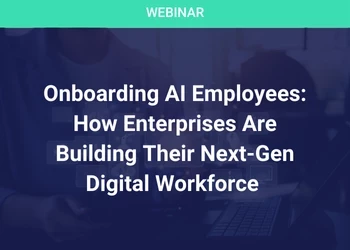
Talent, Technology, Business Resistance and Change Management
A review of the SSC landscape between 2009 and 2019, from the perspective of someone who has led 5 different SSCs in that time
By Lee Brittain
Director of Shared Services, Genesee & Wyoming Inc
A few days ago, a colleague asked me how much I thought Shared Services has changed over the past decade, particularly given the advent of ‘bots’ and AI. At the time, my initial reaction was to confirm that the overall SSC landscape had indeed changed significantly given technological advances.
However, as I began to consider the question further, I traced my experience in leading various Shared Services Centres over the past ten years and began to examine the challenges faced today versus those faced back then.
My conclusions were surprising, even to me.
There are four areas, in particular, that are always on an SSC leader’s mind. On reflection here is how I see the ‘then and now’ scenario playing out:
1. Talent
Attracting and retaining talented individuals with the right attitude and capability remains as key today as it was in 2009. We all continue to battle to recruit from a relatively narrow and agile people-base, where personal demands around flexibility, job satisfaction and environment are still key strategic drivers. The additional challenges introduced from the millennial demographic introduces further considerations in this area.
2. Technology
Have underlying systems really become the significant enablers that we thought they would, ten years ago? CIO’s, Group HQ’s and ERP-centricity remain as prevalent today, in denying technology, as they always have been. Full e-commerce enablement has yet to be achieved; self-service remains light-touch resulting in too many human-touch points; and user experience of ‘Finance systems’ has not improved as much as many had anticipated.
2. Business buy-in & accountability
Operational compliance, C-suite support and, frequently, a lack of business understanding of processes and ‘roles and responsibilities’ continue to impact the performance of Shared Services and how it is viewed across the wider organisation. Any SSC is downstream of supported processes and requires requisitions to be created, and PO’s raised & receipted, before a vendor invoice can be paid, for example. The SSC cannot function successfully without a compliant and accountable operational team.
3. Resistance from business over losing control
One impact of establishing an SSC is the loss of control that is experienced from Finance, HR, and local operational management, who transition from controlling every aspect of the end-to-end process to relying on a geographically distant support function. The loss of local micro-management of non-core support activity remains an issue and is still as challenging as it always has been. Stakeholder engagement to improve ‘business buy-in’ and ‘loss of control’ are still key SSC objectives, that require ongoing focus and a regular re-fresh. C-level mandate and re-enforcement is equally important but not always evident.
4. Change Management
For any SSC change programme, whether it be a transition, new technology implementation, TUPE, turnaround or greenfield project, change management support is critical. Communicating what, why, how and when in a pragmatic and engaging manner will ensure stakeholder buy-in from the beginning. Conversely, lack of change support will severely weaken the programme and impact stakeholder perception, which will reduce benefit realisation (via perception or reality) post go-live.
Summary
When considering the current SSC landscape, it does feel like there has been little progress in terms of resource provision and the prioritisation of the change agenda to alleviate and support the impact of major disruption. The lessons of the past have not been sufficiently heeded.
So, on reflection, the answer to my colleague is not as drastic as might have been expected. My summary outcome is that the challenges faced by Shared Services leaders in 2019 are not so different – in fact – are frightenedly consistent – from those we faced in the first decade of the 21st century.
What remains to be seen is whether e-commerce, robotics and artificial intelligence can truly be leveraged across organisations of all shapes and sizes, resulting in a much-improved landscape in the years to come.


























